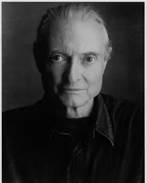 |

|
 |
Roy Lichtenstein was born in New York as the son of a realtor and a housewife. Next to Andy Warhol he is considered as THE great artist of the Pop Art movement. The use of familiar subjects like comic strips, bank notes or advertising themes, makes the art of Roy Lichtenstein easily accessible.
His Early Years
Lichtenstein grew up under no specific artistic influence -neither at home nor at school. But at the age of 14 he attended a painting class at Parson's School of Design every Saturday morning. From 1940 to 1943 he studied in New York at the Art Students' League. Then he was drafted to the US Army and served in Europe during War II. Back from the army, Lichtenstein studied at the Ohio State University from 1946 and received his M.A. in 1949. Like Andy Warhol he worked in the commercial graphic business for a while - making designs and decorating shop windows. From 1957 on, he taught at different universities.
Lichtenstein's first experiments with popular images go back to 1956, when he created the famous Ten Dollar Bill print. Then followed a three year period of abstract painting. "Abstract expressionism" was the dominating art movement at that time. Lichtenstein was then in his late thirties and an unknown artist.
The drastic change in Lichtenstein's career came with his first painting in the style of a comic strip. It was a painting of Mickey Mouse and Donald Duck. The story goes, that he painted it for his kids who had provoked him by saying that "daddy could not paint as well as the images in the comic books". So it may have been his own kids, who are responsible for the artist's move into the olymp of art celebraties.
Pop Art Paintings, Sculptures and Prints
Lichtenstein worked a lot with stencils, thus producing rows of oversized dots that should make his paintings or prints look like a huge mass publication product. Although he prepared and executed his works painstakingly like the old masters, he wanted his works of art look like machine made. One of his peculiarities was, that he did not want his brush strokes to be seen.
Other than paintings and sculptures, the artist produced a number of prints for which he used different techniques: lithographs, screenprints, etchings and woodcuts. Often he combined these techniques in one print.
Lichtenstein is usually characterized as ironic, humorous and witty. He openly commented on his own works. The citations below - mostly taken from interviews - show a very sensitive, intelligent and overt personality.
Lichtenstein in His Own Words
"Commercial art had all of the aspects that were needed to get across a new form of painting which just seemed to be interesting".
"All my art is in some way about other art, even if the other art is cartoons."
When asked, if he disliked the title "pop artist", Lichtenstein answered:
"If people use the word pop to differentiate it from art, then I would not like the idea too much. It is inevitable I am going to be called a pop artist. The name is going to stick, no matter what I think."
"I'd rather use the word dealing with than parody. I am sure there are certain aspects of irony, but I get really involved in making the paintings when I am working on them, and I think just to make parodies or to be ironic about something in the past is much too much of a joke for that to carry your work as a work of art."
"I realize there's a difference in style and so forth, but first of all, I think there isn't that big difference between Romantic and Classical artists. There is obviously a difference in emphasis, and I would be more of a Classical artist than a Romantic, I suppose, but then the kind of unity that holds a painting together is really the same whether it's done by Rembrandt or David or Picasso or Oldenburg. There's really not that much difference, there never was."
Literature source used for this Roy Lichtenstein biography
• Roy Lichtenstein, exhibition catalog of the foundation Beyeler, 1998, ISBN 3-905632-02-0
|
|
